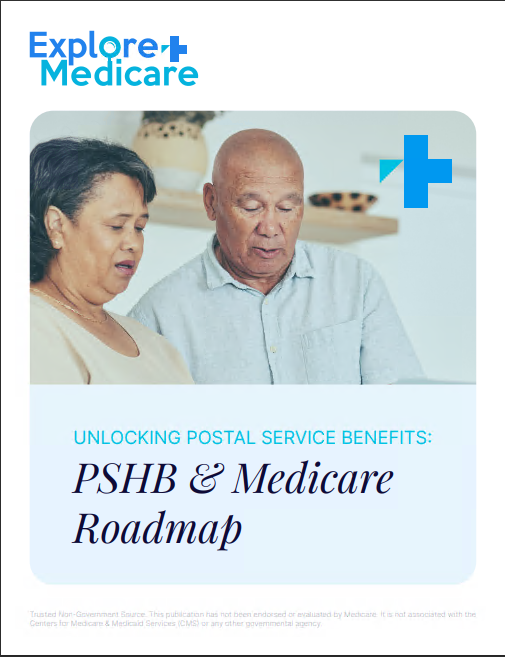Key Takeaways
-
Medicare enrollment is not automatic unless you already receive Social Security or Railroad Retirement Board benefits before age 65.
-
Missing your enrollment window can lead to lifelong late penalties and coverage delays, especially for Part B and Part D.
Why Medicare Enrollment Isn’t a Given
When you turn 65, you might assume Medicare will just show up in your mailbox. But that’s only true for certain individuals. If you’re not already receiving Social Security or Railroad Retirement Board benefits at least four months before your 65th birthday, you must actively enroll yourself.
This enrollment gap catches many people off guard. The result? Missed deadlines, late enrollment penalties, and unexpected gaps in healthcare coverage. In 2025, the stakes are higher than ever as more people delay retirement and work past age 65.
Understanding Your Initial Enrollment Period (IEP)
Your first opportunity to sign up for Medicare is known as the Initial Enrollment Period (IEP). It begins three months before the month you turn 65, includes your birthday month, and continues for three months after—a total of seven months.
If you don’t act within this period, and you’re not covered by other qualifying insurance through current employment, you’ll likely face late enrollment penalties and coverage delays.
What Each Part Means During IEP:
-
Part A (Hospital Insurance): Most people receive it premium-free if they’ve worked 40 quarters (10 years). You can still enroll even if you haven’t worked enough, but you’ll pay a monthly premium.
-
Part B (Medical Insurance): You must actively enroll unless you’re auto-enrolled through Social Security or RRB benefits. If you delay, a 10% penalty per year of delay applies for life.
-
Part D (Prescription Drug Coverage): Also requires enrollment. The penalty is 1% of the national base premium for every month you go without coverage after your IEP ends, unless you have other credible drug coverage.
What Happens If You’re Still Working at 65?
Many people are still employed and covered by a group health plan when they reach Medicare eligibility. In this case, Medicare doesn’t force you to enroll right away—but that flexibility comes with responsibilities.
If You Have Employer Coverage
-
If your employer has 20 or more employees, you can delay enrolling in Part B and Part D without penalty. Your employer plan remains primary.
-
Once your employment ends (or your employer coverage ends), you enter a Special Enrollment Period (SEP) that lasts eight months for Part B and 63 days for Part D.
During your SEP, you won’t pay late penalties—as long as you enroll within the designated time frame. But if you miss this period, penalties apply and you may have to wait for the General Enrollment Period (January 1 – March 31) for Part B, with coverage starting July 1.
Automatic Enrollment: Who Gets It and Who Doesn’t
In 2025, you are automatically enrolled in Medicare Parts A and B if:
-
You’re already receiving Social Security or RRB benefits at least four months before turning 65.
-
You’re under 65 and have received Social Security Disability Insurance (SSDI) for 24 months.
If neither applies to you, you must take action on your own. There’s no warning or reminder from Medicare if you’re not already in the Social Security system.
Common Pitfalls That Lead to Penalties
Even with best intentions, it’s easy to misstep. Here are several situations where people get tripped up:
-
Delaying Part B without proper employer coverage: Retiree health plans, COBRA, or VA coverage usually don’t count as valid reasons to delay.
-
Overlooking Part D entirely: Even if you don’t take any medications, skipping drug coverage can result in long-term penalties.
-
Thinking FEHB makes you exempt: If you’re a federal employee or retiree, Federal Employees Health Benefits (FEHB) may coordinate with Medicare, but not always in your favor unless you enroll in Part B.
-
Assuming your spouse’s plan counts: You must be actively employed under that coverage; just being on a spouse’s retiree plan doesn’t exempt you.
When to Use the General Enrollment Period (GEP)
If you missed both your IEP and SEP, the next chance to enroll in Part B is during the General Enrollment Period, which runs from January 1 to March 31 each year. Your coverage begins July 1, and late penalties apply.
For Part D, you may have to wait until the Annual Enrollment Period (October 15 to December 7) unless you qualify for another SEP.
Timing Rules for Medicare Advantage and Medigap
Once you’re enrolled in Parts A and B, you’re eligible to choose additional coverage:
-
Medicare Advantage (Part C): You can enroll during your IEP or switch plans during the Annual Enrollment Period.
-
Medigap (Supplement Plans): You have a six-month open enrollment period starting when you’re both 65 and enrolled in Part B. During this time, you can’t be denied coverage or charged more due to preexisting conditions.
Miss this window, and you might have limited options or higher costs if you try to enroll later.
Why Awareness Matters More in 2025
With more Americans working longer, navigating employer coverage, and delaying retirement benefits, Medicare enrollment decisions have become more layered than ever. And as automatic enrollment applies to fewer people, it’s up to you to know when and how to act.
There’s also more at stake. Missing deadlines means:
-
Higher out-of-pocket costs due to lifelong penalties.
-
Delayed access to critical healthcare services.
-
Limited plan choices when you finally do enroll.
It’s a system that rewards those who are proactive.
What You Should Do Right Now
To avoid mistakes and keep your Medicare timeline on track, consider these immediate actions:
-
Mark your IEP on your calendar as soon as you approach age 64.
-
Review your current coverage to determine whether you need to enroll at 65 or can delay.
-
Gather documentation of your employer coverage if planning to delay Part B or Part D.
-
Understand your SEP options and prepare to act quickly when employment ends.
-
Compare plan options early, especially if considering Medigap or Medicare Advantage.
-
Ask questions early—ideally months before your 65th birthday.
Making Confident Choices Starts Here
If you’re not automatically enrolled in Medicare, it’s not just an inconvenience—it’s a potential financial risk. The structure of enrollment periods and penalties means your choices now can have long-term consequences.
Instead of assuming everything will be handled for you, take control. Being informed is your best defense against unnecessary costs, coverage gaps, and confusion later.
If you’re unsure where to begin or need personalized guidance based on your situation, talk to a licensed insurance agent listed on this website who can help you sort through your options and enrollment deadlines.









